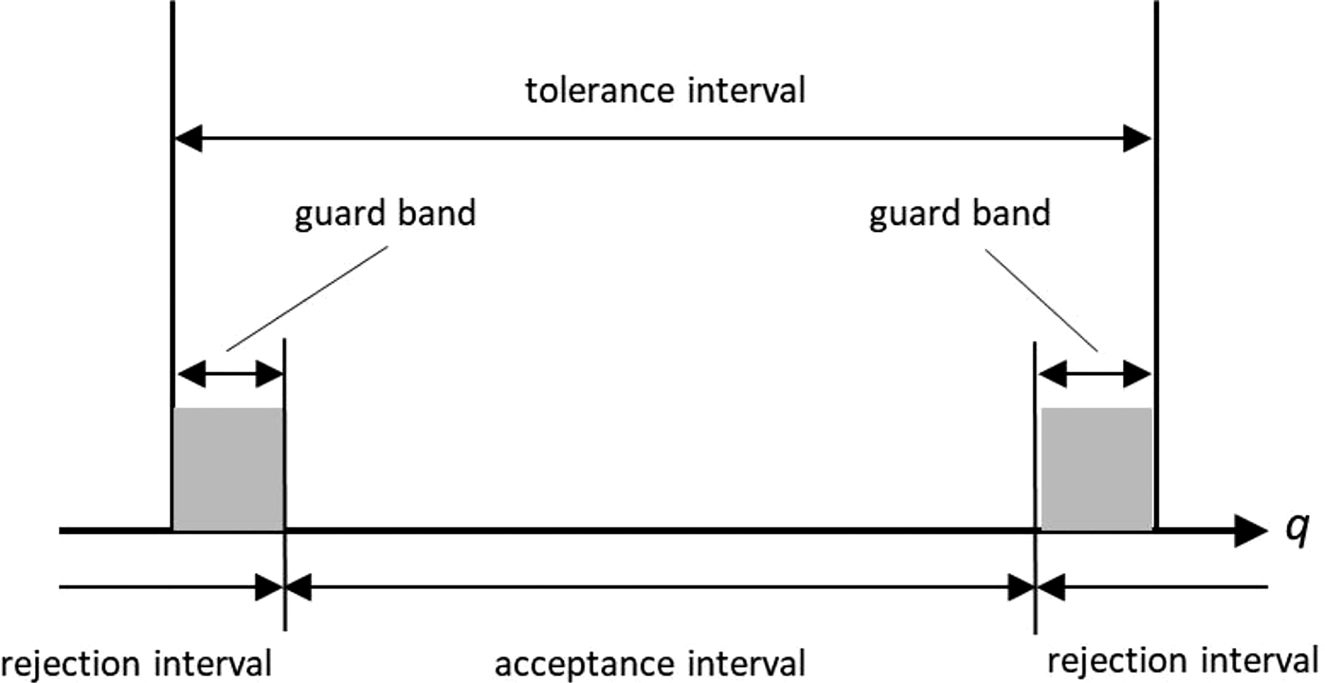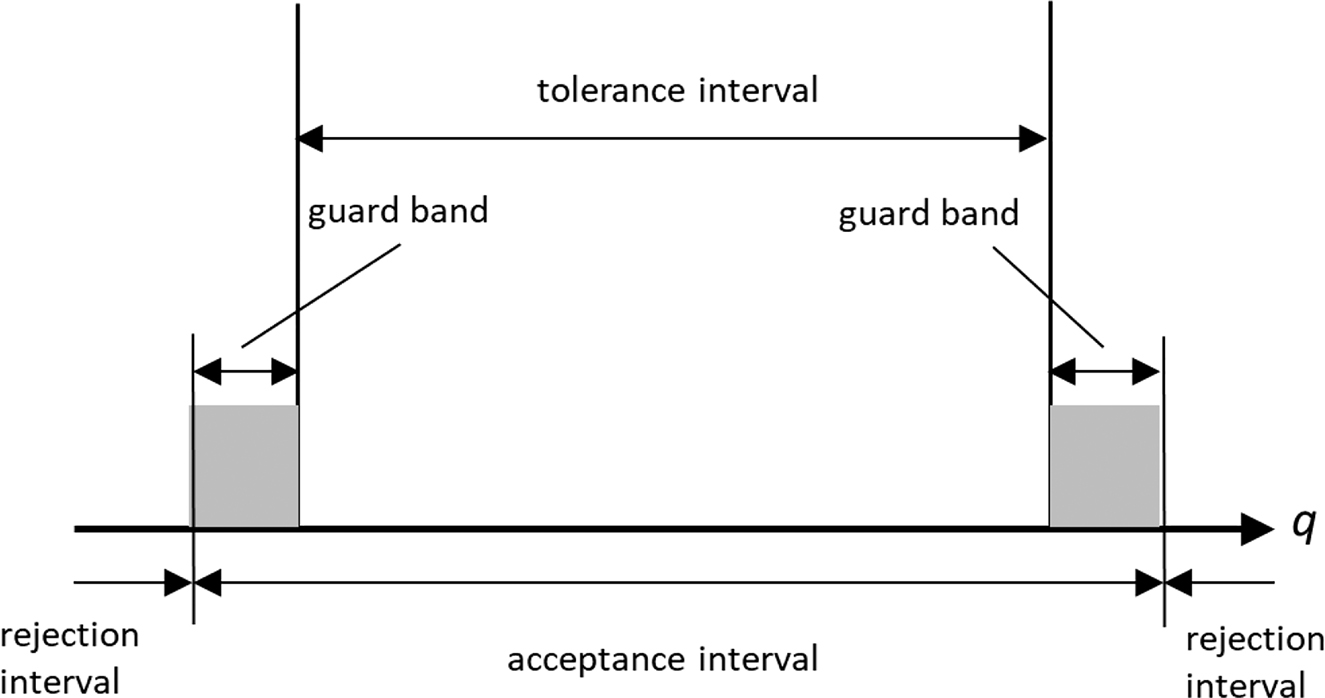https://doi.org/10.1351/goldbook.08076
Interval between a tolerance limit and a corresponding acceptance limit.



Figure 1: Guarded acceptance. Two-sided acceptance interval created by reducing the tolerance interval on either side by a guard band, thus reducing the probability of falsely accepting a non-conforming item.

Figure 2: Guarded rejection. Two-sided acceptance interval created by increasing the tolerance interval on either side by a guard band, thus reducing the probability of falsely rejecting a conforming item.
Notes:
- A guard band is used to restrict or to extend an acceptance interval to reduce the probability of an unwanted decision on conformance due to the measurement uncertainty of the actual measurement. The width of a guard band is scaled with the measurement uncertainty. (See: decision rule in conformity assessment).
- If the acceptance limits lie within the tolerance limits, the decision for conformity of the item is known as guarded acceptance. The probability of falsely accepting a non-conforming item is reduced. This is most often found in chemistry. See Fig. 1.
- If the acceptance limits lie outside the tolerance limits, the decision for conformity of the item is known as guarded rejection. The probability of falsely rejecting a conforming item is reduced. See Fig. 2.
See also: conformity assessment